Insomnia, sleep deprivation, and disturbed sleep patterns represent critical nursing problems needed to be addressed concerning sleep disruption. Insomnia involves challenges with initiating or maintaining sleep, while sleep deprivation occurs when someone consistently fails to obtain enough rest. The nursing diagnosis of a disturbed sleep pattern further encompasses these conditions, underlining the irregular and disrupted nature of an individual’s sleep cycle. This examination focuses on such sleep disturbances, underscoring the essential role of nursing in reducing their impacts through education on sleep hygiene, relaxation techniques, and lifestyle adjustments conducive to better sleep. Nurses are integral in mitigating the effects of insomnia, sleep deprivation, and disturbed sleep patterns.
What is Insomnia and Sleep Deprivation?
Insomnia is a sleep disorder where the client struggles to get off to sleep or to stay asleep. These night-time sleep difficulties occur with significant daytime problems that affect the person’s ability to function at their best. To be diagnosed with an insomnia disorder, these difficulties have to occur at least several times a week for three months (Riemann et al., 2023). It can be caused by various factors such as stress, anxiety, or medical conditions.
Insomnia, as classified by the Diagnostic and Statistical Manual of Mental Disorders Fifth Edition (DSM-5), is identified by a person’s dissatisfaction with their sleep, either in terms of quantity or quality. This condition is characterized by several symptoms, including trouble falling asleep, difficulty staying asleep with frequent awakenings or trouble returning to sleep, and waking up too early without being able to go back to sleep. For a diagnosis of insomnia, these sleep disturbances must cause significant distress or impairments in various aspects of a person’s life, such as social, occupational, or educational functioning. The issues must occur at least three nights a week, persist for a minimum of three months, and happen despite having enough time for sleep. Importantly, these sleep difficulties cannot be attributed to other sleep disorders, substance abuse, medication, or coexisting mental or medical conditions.
On the other hand, sleep deprivation results from a chronic lack of sufficient sleep over an extended period. It occurs when an individual does not obtain the recommended amount of sleep needed for overall health and well-being. Sleep deprivation can be caused by lifestyle factors, work schedules, or specific health conditions.
While both diagnoses involve sleep disturbances, the key difference lies in the nature of the disruption – insomnia pertains to difficulty falling or staying asleep, while sleep deprivation refers to an overall lack of sufficient sleep.”
Causes
Here are some factors that may be related to insomnia and sleep deprivation:
- Abnormal physiological symptoms (e.g., hypoxia, dyspnea, neurological dysfunction)
- Aging
- Anxiety
- Chronic stress
- Depression
- Emotional or physical discomfort
- Environmental variations
- Excessive stimulation
- Medications
- Pain
- Substance abuse
Nursing Care Plans and Management
Nursing care plans serve as organized roadmaps that guide healthcare professionals in addressing the unique needs of each client. Insomnia can significantly impact a client’s quality of life, leading to various physical and mental health difficulties. The nurse must consider a holistic approach that includes the client’s medical history, lifestyle, and contributing factors. Management strategies may include both non-pharmacological and pharmacological interventions designed to fit the specific needs and preferences of the client. This nursing care plan will highlight the importance of a client-centered approach and evidence-based interventions to promote restorative sleep and overall well-being.
Nursing Problem Priorities
The following are nursing priorities for clients diagnosed with insomnia:
- Disturbed sleep pattern. The disturbances in the client’s sleep pattern contribute to significant role impairments and are often the primary concern prompting the client to seek treatment.
- Fatigue and stress. Persistent insomnia is a significant risk factor for worsening mental health and the development of several psychiatric disorders. Clients with insomnia also described daily life as an effort or struggle and raised concerns over the cumulative and long-term impact of insomnia on their physical health.
- Impaired cognitive function. Individuals with insomnia show deficits in cognitive performance, most notably in attention, concentration, and memory-related tasks; all of which can produce pervasive consequences in every aspect of daily life.
Signs and Symptoms
Insomnia can be caused by several variables. The client’s chief complaint should be assessed. The client’s medical history related to insomnia with short sleep periods can be related to various diseases. Therefore, meticulous and detailed assessment must be performed to ascertain the presence of insomnia.
The following signs and symptoms characterize insomnia:
Daytime effects:
- Fatigue and tiredness
- Lack of energy
- Irritability
- Reduced work performance
- Difficulty concentrating
Nocturnal complaints:
- Difficulty initiating sleep
- Difficulty maintaining sleep
- Waking up earlier than desired
- Resistance to going to bed on the appropriate schedule
Nursing Diagnosis
Following a thorough assessment, a nursing diagnosis is formulated to specifically address the challenges associated with insomnia or sleep deprivation based on the nurse’s clinical judgement and understanding of the patient’s unique health condition. While nursing diagnoses serve as a framework for organizing care, their usefulness may vary in different clinical situations. In real-life clinical settings, it is important to note that the use of specific nursing diagnostic labels may not be as prominent or commonly utilized as other components of the care plan. It is ultimately the nurse’s clinical expertise and judgment that shape the care plan to meet the unique needs of each patient, prioritizing their health concerns and priorities. However, if you still find value in utilizing nursing diagnosis labels, here are some examples to consider:
- Disturbed Sleep Pattern related to environmental noise AEB patient reporting difficulty staying asleep due to external sounds and expressing fatigue during the day.
- Disturbed Sleep Pattern related to anxiety AEB patient describing prolonged latency to fall asleep due to racing thoughts and waking up feeling anxious during the night.
- Disturbed Sleep Pattern related to newborn care responsibilities AEB parent reporting frequent awakenings to attend to infant needs and expressing difficulty returning to sleep.
- Disturbed Sleep Pattern related to chronic pain AEB patient stating that pain awakens them during the night and difficulty finding a comfortable sleeping position.
Nursing Goals
Goals and expected outcomes may include:
- The client will obtain optimal amounts of sleep as evidenced by a rested appearance, verbalization of feeling rested, and improvement in sleep pattern.
- The client will have an improved sleep experience.
- The client will be able to regain normal functioning in their daily life.
- The client will understand the proper use of sleep aids or other medications.
Nursing Interventions and Rationales
Therapeutic interventions and nursing actions for clients diagnosed with insomnia may include:
1. Nursing Assessment of Insomnia
This assessment may further assist in identifying changes that may lead to a diagnosis of insomnia or troubled sleep patterns that require action by healthcare professionals. Insomnia must be addressed in the best way possible to stop it from becoming a chronic problem.
Assessing the client’s sleep history
Determine patterns of sleep in the past in a normal environment: amount, bedtime routines, depth, length, positions, aids, and other interfering factors.
Each individual has different patterns of sleep. Information about this topic provides baseline data for evaluating means to improve the client’s sleep. The sleeping history incorporates sleep and awakening schedule, bedtime schedule, night-time behavior, and dysfunction during the day.
Observe sleep-wake behaviors. Take down notes on the number of hours the client is asleep.
This provides baseline data for the evaluation of insomnia. This must be determined in work, school days, and weekends or vacations. A detailed note on the schedule to bed, time to sleep, recurrence of night arousals, time to get back to sleep, time awakening in the morning, and time to get out of bed.
Assess the client’s bedtime routine and nocturnal behavior.
The nurse should ensure that deficient sleep is not because of the poor sleep environment to confirm the clinical assessment of insomnia. To assess the client’s nocturnal behavior, the nurse may ask about activities at night, and behaviors at night such as leg kicking or snoring. Contribution from a bed partner can also be useful, as they will regularly notice the duration of sleep and some sleep misconceptions.
Assess the client’s daytime functioning.
The daytime functioning can induce insomnia because the client may become tired and experience heaviness of the head, headache, and feel uncomfortable in their daily routine.
Utilize validated instruments or questionnaires.
The daytime sleepiness is measured by using the Epworth sleepiness scale (ESS) with the help of short questionnaires. The possibility of falling asleep from 0 to 3 for eight different conditions is estimated with the help of ESS. The Athens Insomnia Scale (ASI) is most commonly used for diagnosing insomnia. It has eight parameters of which 1 to 5 are related to nocturnal sleep, and 6, 7, and 8 are associated with daytime dysfunction. ASI parameters include sleep promotion, awakening during the night, final awakening, total sleep duration, sleep quality, well-being during the day, functioning capacity during the day, and sleepiness during the day.
Implement the use of actigraphy as indicated.
Actigraphy is used for recording human nonfunctional and functional activity cycles. It has a small altigraph part called a sensor of actimetry. It is used to measure gross motor action for a week or more. It is a wristwatch-like unit worn on the wrist.
Determining causes or risk factors for insomnia
Note physical or psychological circumstances that hinder sleep such as noise, pain, discomfort, urinary frequency, fear, and anxiety.
The client’s perception of insomnia may differ from objective evaluation. Clinical consideration of whether or not the client’s sleep symptoms are coupled with dissatisfaction with sleep and any symptoms despite adequate time allotted for sleep and the opportunity to sleep in a comfortable environment is mandatory.
Evaluate the client’s knowledge of the cause of sleep problems and potential relief measures to facilitate treatment.
The client may have insights about the existing problems (e.g., anxiety or fear about a certain situation in life). Many clients with insomnia suffer comorbidly from another mental disorder, which may be stigmatized and therefore will not be reported spontaneously by the client. This data will determine the appropriate therapy.
Observe and evaluate the timing or effects of medications that can affect sleep.
Following medication schedules that require a lot of attention may affect the sleeping pattern of the client, especially in the hospital setting. Insomnia as a possible side effect of prescribed medications may occur with a huge variety of substances, such as corticosteroids, beta-blockers, antibiotics, antidementia, and probably many more.
2. Promote Sleep Hygiene
Sleep hygiene can improve sleep by affecting sleep latency and time awake after sleep onset, total sleep time, and slow wave sleep; and influencing REM sleep. Some of the sleep hygiene recommendations are exercise, limiting caffeine, avoiding alcohol, food and liquid intake, bedroom environment, etc (Porwal et al., 2021).
Encourage daytime physical activities but instruct the client to avoid strenuous activities before bedtime.
In insomnia, stress may be reduced by therapeutic activities and may promote sleep. However, strenuous activities may lead to fatigue and may cause insomnia. Therefore, performing relaxation exercises that include the tensing and relaxing of muscle groups, diaphragmatic breathing, and visual symbolism instead of strenuous exercise may be beneficial for sleep.
Encourage the client to take milk.
L-tryptophan is a component of milk that promotes sleep. Antioxidant and anti-inflammatory components in milk and dairy products may also contribute to improvements in sleep quality. Studies have also suggested that fortifying milk with tryptophan, from which melatonin is synthesized, improves sleep quality and increases sleep duration. Malted drinks, such as Horlicks, and fermented milk can also improve sleep (Komada et al., 2020).
Instruct the client to follow a consistent daily schedule for rest and sleep.
Consistent schedules facilitate the regulation of the circadian rhythm and decrease the energy needed for adaptation to changes. Sleep hygiene can improve sleep by affecting sleep latency and time awake after sleep onset, total sleep time, and slow wave sleep; and influencing REM sleep.
Remind the client to avoid taking a large number of fluids before bedtime.
This will prevent the client from going to the bathroom in between sleep. Excess amount of liquid during the evening may result in increased urination resulting in increased nocturnal awakenings.
Advise the client to avoid sleeping hungry or eating a heavy meal before bedtime.
Sleeping hungry or eating a heavy meal before sleep is generally not recommended, and also, liquid intake should be minimized in the evening, two to three hours before bedtime. It suggests that trying to sleep can become more difficult if the client is digesting a heavy meal. Sleeping hungry may also result in a decrease in blood sugar at night, keeping the client awake.
Ensure appropriate lighting and temperature in the client’s bedroom.
Lights in the bedroom may prevent a person from sleeping or make them awake earlier than desired because it influences circadian and melatonin suppression. Additionally, both excessively hot and colder environments in the bedroom can negatively influence sleep. An ideal sleep temperature between 60°F/15.6°C and 67°F/19.4°C is suggested by the National Sleep Foundation.
Decrease the number of daytime naps unless needed.
Napping can disrupt normal sleep patterns; however, older adults do better with frequent naps during the day to counter their shorter nighttime sleep schedules. In insomnia clients, frequent napping seems to be associated with poorer subjective sleep quality. There is attention to sleep habits in clients suffering from insomnia and insomnia-type sleep disturbances and there is evidence for higher nap frequency in insomnia clients (Mazza et al., 2020).
Educate the client on the proper food and fluid intake such as avoiding heavy meals, alcohol, caffeine, or smoking before bedtime.
Having full meals just before bedtime may produce gastrointestinal upset and hinder sleep onset. Coffee, tea, chocolate, and colas which contain caffeine stimulate the nervous system. This may interfere with the client’s ability to relax and fall asleep. Alcohol produces drowsiness and may facilitate the onset of sleep but interferes with REM sleep.
Provide information about cognitive behavioral therapy (CBT).
Any client suffering from insomnia should be asked about their sleep behaviors because sleep hygiene along with CBT can be used to treat insomnia without medications. Utilized in several patterns, CBT has been discovered to be successful in bringing down insomnia and improvement in sleep in a broad range of populations. The American College of Physicians has suggested this therapy to be the primary treatment for clients with insomnia. The following are the behavioral components of CBT:
- Stimulus control. Vicious circles of the bedroom/bed and episodes of physiologic awakening, fright, nervousness, and irritation prompt the bed serving as the known indication or conditioned stimulus for awakening. To get out of this conditioned stimulus, the client is advised to keep themselves away from the bedroom and bed if not feeling sleepy and sit quietly somewhere until the sensation of sleepiness returns.
- Sleep restriction. Excess duration in ned brings about conditioned arousal and interrupted sleep. To adequately do this procedure, the client is given a sleep diary for at least one week or two weeks, thereby reducing the client’s time in bed to the total sleep hours. If the client’s diary reported six hours of average total sleep time but a period of nine hours in bed, then a new sleep timetable should give a time of six hours in bed.
Encourage the client to keep a sleep diary.
Sleep diaries should be filled by the client throughout the CBT. Their schedules regarding timings in bed are evaluated in all successive CBT sessions, and each session should be scheduled every one to two weeks. The healthcare professional can determine the client’s average sleep efficiency from the sleep diary, calculated as the percentage of time a client is asleep given their time in bed.
For clients with insomnia in the hospital setting
Eliminate any activities that are not important.
This measure facilitates minimal interruption in sleep or rest. Strenuous exercise should not be done at least three to four hours before bedtime. In addition, a relaxing schedule can be useful in preparing the client for sleep including preventing arousing activities like exposure to bright light (laptop and cellphone screens), which can harm the client’s circadian rhythm.
Place the client in a room away from any distractions or noise such as the nursing station.
The nursing station is often the center of noise and activity. Findings are clear that excessive noise disrupts sleep and subsequent daytime performance, even if the client does not recall awakening during the night. The WHO suggests night-time noise should be below 40 decibels.
Provide a “Do not disturb” sign in the client’s room.
It is necessary to alert people in this kind of situation to avoid disruption of sleep. The client’s sleep is frequently disrupted by intrusive observations, treatment administration, transfer to other rooms, noisy alarm systems, and other equipment. Better timing of observations and greater use of remote monitoring can help, as can timing interventions and client movement to minimize the impact on overnight sleep (Hillman, 2021).
Perform bedtime nursing care such as back rub and other relaxation techniques.
These kinds of activities facilitate relaxation and promote the onset of sleep. Empirical research on insomnia suggests that progressive muscle relaxation, autogenic training, and imagery exercises are most frequently used for the treatment of insomnia.
Attempt to allow for sleep cycles of at least 90 minutes.
Research shows that 60 to 90 minutes are necessary to complete one sleep cycle and that the completion of an entire sleep cycle is beneficial. Unlike good sleepers, clients with insomnia continue to feel awake even after the first sleep cycle and, importantly, during REM sleep (Stephan & Siclari, 2023).
Educate clients about their sleep requirements and sleep conditions.
Most people need at least six hours of sleep for normal memory and brain function. Psychoeducation typically comprises foundational information on the roles and functions of sleep, age-related changes, and how sleep-wake (circadian) patterns are regulated.
Explain the main cause of sleeping difficulties.
Misconceptions and myths about sleep exist. Wrong notions about sleep disturbances may cause fear and anxiety. Humans respond with different patterns in body temperature alterations, feeding, sleeping, and other biological functions to cycles of light and dark. Alterations or disruptions to any one of these may cause a disturbance in the sleeping pattern.
Administer pharmacological agents as prescribed.
In case pharmacotherapy becomes necessary, a particular medication within a class should be chosen according to the pattern of symptoms, objectives of the therapy, previous therapy responses, cost, client compliance, contraindications, accessibility, comorbidities, possible adverse effects, and simultaneous medication interactions. The most commonly prescribed medications are:
- Sedative-hypnotics. These agents do not usually cure insomnia, but they can provide symptomatic relief as a sole therapy or as an adjunct to CBT. some clients cannot adhere to or do not respond to CBT and are candidates for these agents. Rebound insomnia may develop when a sedative-hypnotic is abruptly withdrawn.
- Orexin inhibitors. This is indicated for the treatment of insomnia characterized by difficulties with sleep onset and/or sleep maintenance. The American Academy of Sleep Medicine recommends that suvorexant be used as a treatment for sleep maintenance insomnia as opposed to no treatment.
- Melatonin receptor agonist. Ramelteon is approved by the FDA for use in clients with insomnia. It has been shown to have no potential for abuse. This agent is suited for clients with sleep-onset insomnia, particularly older adults with gait disorders who have an increased risk of falls, and clients with a history of substance abuse.
Provide appropriate and adequate pain relief as indicated.
Uncontrolled pain is a further source of sleep disruption frequently experienced by hospitalized clients. Ensuring pain control strategies include optimization of sleep as one of their foci. Administering adequate pain relief is also beneficial for the client’s sleep pattern in hospitals.
3. Provide Stress Relief and Decrease Fatigue
Persistent insomnia is associated with a two times higher likelihood of future anxiety and a four times greater likelihood of future depression in adults, adolescents, and children. Prevention approaches can be particularly helpful in altering lifestyle behaviors and sleeping environment, all of which may have a significant effect on the general population, as well as on vulnerable populations.
Introduce relaxing activities such as warm baths, calm music, reading a book, and relaxation exercises before bedtime.
These activities provide relaxation and distraction to prepare the mind and body for sleep. Relaxation techniques help supplement sleep restriction and stimulus control by furnishing the client with techniques to decrease arousal before bedtime and in case of awakenings during nighttime.
Advise the client to write a journal regarding problems before retiring.
Journaling allows the client to “set aside” problems or any mental activities just before sleeping. This approach is also known as a constructive worry exercise, in which clients are required to make a list of at least three problems in the early evening that they think will make them awake at night. The client should mention a solution for every problem. The journal should be closed and kept away, and if the client wakes up at night, they are advised to remind themselves that they have already resolved that issue at their “problem-solving best”.
Encourage the client to exercise regularly.
Exercise in the late afternoon or early evening (at least six hours before bedtime) can promote sleep. However, vigorous physical activity in the late evening can worsen insomnia.
Provide information about the effects of acupressure as recommended.
A study found that acupressure treatment can improve insomnia, with effects lasting after the end of the intervention. In a randomized, controlled trial of 50 residents in long-term care facilities, five weeks of standard acupressure significantly reduced insomnia, with the benefit persisting for up to two weeks afterward.
4. Improve Cognitive Performance and Daily Functioning
Insomnia is often associated with role impairments, particularly in the work environment. Thus, it is recognized as a significant barrier to the achievement of career and life goals. Insomnia is also linked with greater cognitive failures in everyday activities. Therefore, strategies to alleviate insomnia at the community level are important to prevent long-term consequences.
Educate the client about the use of over-the-counter, herbal, and prescription sleep aids, as indicated.
These may be beneficial when a client experiences short-term sleep problems.
- Melatonin
Its main job in the body is to regulate night and day cycles or sleep-wake cycles. Older adults seem to tolerate melatonin with minimal side effects. Melatonin given early in the evening appears to increase sleep time; however, administration 30 minutes before a normal bedtime has not resulted in a decreased sleep latency or an increase in sleep time (Chawla & Benbadis, 2022). - Antihistamines
Many over-the-counter drugs contain antihistamines that can cause drowsiness, which might help the client fall asleep for a few nights. These drugs produce anticholinergic side effects that may harm older adults. These agents may have some subjective benefit, but long-term efficacy and safety have not been demonstrated. - Prescription sedative-hypnotics, anti-anxiety drugs
These act through general central nervous system depression and disrupt the normal stages of non-rapid eye movement (NREM) and REM sleep. Long-term use may cause daytime drowsiness, rebound insomnia, and increased dreaming when discontinued. Sedative hypnotics do not usually cure insomnia, but they can provide symptomatic relief as a sole therapy or as an adjunct to CBT. - Valerian, chamomile, lavender, kava
Tea made by mixing chamomile and Valerian root makes an excellent bedtime ritual that facilitates stress relief and relaxation. Chamomile acts to facilitate general relaxation rather than as an actual sleep aid, while Valerian causes drowsiness. Using Valerian with kava may increase side effects such as dizziness, drowsiness, confusion, and difficulty concentrating. Extra carefulness is necessary because some herbal products are not regulated by the FDA.
Suggest an environment conducive to rest or sleep.
A lot of people sleep better in a cool, dark, quiet environment. Environmental modifications such as eye masks, blackout blinds, earplugs, use of suitable sleepwear, bedding, and new mattresses are encouraged under this recommendation. An ideal sleep temperature between 60℉(15.6℃) and 67℉(19.4℃) is suggested by the National Sleep Foundation.
Advise the client to decrease thoughts about the next day’s activities or any distracting thoughts at bedtime.
Providing a designated time for these concerns allows the client to “let go” of these problems at bedtime. Sleep-related concerns should be significantly attended to by the healthcare professional, as they will induce unsuitable behaviors that extend insomnia.
Suggest the client get out of bed temporarily and perform a relaxing activity if unable to sleep 30 to 45 minutes in bed.
The bed is not supposed to be used for watching TV, work, or wakefulness. The brain should associate the bed with sleeping. At sleep time, the client is advised to avoid going to bed until they feel sleepy. The bedroom and bed should be strictly used for sleeping. The client should not do other activities in the bedroom, like reading or watching television.
Assist the client during cognitive therapeutic activities.
Difficulties with cognitive arousal, mental events intruding upon sleep, heightened emotion, and counterproductive sleep effort are very common in insomnia. In brief, this includes interventions such as cognitive control, paradoxical intention, imagery training, and cognitive restructuring.
Sleep is one thing that is universal to people. It is a human need and in fact, humans spend a third of their lives sleeping. It is vital for optimal psychological and physiological functioning. Sleep is essential to conserve energy, prevent fatigue, and to restore the mind and the body.
While sleep is something that one falls into spontaneously, research studies and health records suggest otherwise. According to the 2015 surveillance report by the Centers for Disease Control and Prevention (CDC), 50-70 million Americans are estimated to be suffering from sleep or wakefulness disorder. Moreover, nearly half of this report snoring and 35% only have more than seven (7) hours of sleep on a typical 24-hour day. Incidences of drowsy driving and unintentionally falling asleep during the day have been recorded too. Truly, sleep disorders and deprivation are unmet public health problems. Moreover, it is linked to vehicular accidents, occupational and medical errors, and industrial accidents.
Currently, increasing public awareness of this health problem is a priority. Ongoing research about sleep medicine and somnology (the study of sleep) is being done as well as increasing the education and training of healthcare professionals in handling this health problem.
Sleep Hygiene
In promoting sleep, nurses are mainly involved in sleep hygiene, which refers to the set of interventions used to improve and promote sleep. Nurses use nonpharmacologic measures to increase the quantity and quality of clients’ sleep. Sleep hygiene encompasses health education on sleep rituals and habits, a restful environment, comfort and relaxation, and occasionally, the use of hypnotic medicines.
Individuals need to realize the importance of sleep and its relation to fulfillment, productivity, and activity. Here are seven sleep-promoting tips nurses must share with their clients:
1. Relief for the Sleep-Challenged
For individuals who have difficulty initiating and maintaining sleep, establishing regular bedtime and wake-up time must be observed strictly. Through this, biological rhythm is enhanced, and the body slowly falls into the established routine.
For individuals unable to sleep, getting out of bed and spending some time in another room is recommended. Engaging in relaxing activities like reading or listening to soft music should continue until feeling drowsy. Bedtime stories can relax children, holding onto a favorite toy or blanket, and a goodnight kiss.
Of course, some individuals are fond of naps. However, there are a few considerations about naps. For example, a short daytime nap of 15-30 minutes can be restorative for elders and will not interfere with nighttime sleep. On the other hand, insomniacs are cautioned to avoid naps.
2. Beating the Hours Before Bedtime
Questions about appropriate activities near bedtime hours are common. Activities are one of the major factors that can affect sleep. As a rule, dealing with office work and family problems should be avoided before bedtime. It is also helpful to establish a regular and relaxing bedtime routine composed of quiet activities like taking a warm bath and reading.
It is important that one associate’s bedroom for sleep. Therefore, the bedroom should only be used for sleep and sexual activities. Work materials, television, and computers should be taken out of the bedroom. Having television and computers inside the room will only strengthen the association between wakefulness and sleep. Lastly, for individuals who only have the night available for exercising, avoid excessive physical exertion three (3) hours before bedtime.
Rituals can be supported in institutionalized patients by assisting them with a hand and face wash, massage, pillow plumping, and even talking about today’s accomplishments and enjoyable events. These can promote relaxation and peace of mind.
3. Setting Up a Sleep-Inviting Environment
A sleep-conducive environment should have minimal noise, comfortable room temperature, mattress, and pillows, and appropriate ventilation and lighting. According to studies, music is discouraged because it is interesting and will promote wakefulness. Extraneous noise from a fan, air conditioner, and white noise machine must be blocked out. Most people may prefer a darkened environment, but children and individuals in a strange environment would benefit from a low light source.
For patients in the hospital, factors that can prevent sound sleep include staff noise during shifts, telephones and call lights, doors, paging systems, and even carts wheeled through corridors. Safety and comfort can be promoted by raising side rails, placing the bed in a low position, and using night lights.
4. Diet for Good Sleep
For a good quality of sleep, heavy meals should be avoided 2-3 hours before bedtime. Foods that contain alcohol and caffeine (e.g. chocolates, coffee, etc.) should be avoided 4 hours before bedtime. Both substances can interfere with sleep because of their diuretic properties. They will cause individuals to feel the need to void during sleep time. If a bedtime snack is necessary, a glass of milk or a share of light carbohydrates is recommended. Heavy and spicy foods should be avoided because they can disturb sleep by inducing gastrointestinal distress.
5. Promoting Comfort and Relaxation
Interventions that can promote comfort and relaxation include assisting with hygienic routines, providing loose-fitting nightwear, encouraging voiding before sleeping, and making sure bed linen is smooth, clean, and dry. Elders, often susceptible to feeling cold, benefit from encouragement to wear personal clothing along with socks or leg warmers instead of hospital gowns. A prewarmed bath blanket or cotton flannel sheets can also be used.
These measures are essential to help the client stay asleep, especially if an illness is present and interferes with sleep. Nurses and family members should be concerned and caring during these times.
6. Addressing Emotional Stress
It is nearly impossible for individuals who are emotional to fall easily into a deep slumber. Emotional stress interferes with the individual’s ability to rest, relax, and sleep. Slow and deep breathing techniques for a few minutes can alleviate tension and induce calm. Other techniques that can be taught include imagery, yoga, and meditation.
7. Medication for Enhanced Sleep
Sometimes, medications are prescribed on per needed basis. Sedative hypnotics can induce sleep. Antianxiety or tranquilizers can reduce anxiety and tension. For patients feeling pain, analgesics must be taken before bedtime to relieve aches and pains. Other medications may cause insomnia so a consultation with the provider is encouraged.
Medications are only used as a last resort. Caution is advised on over-the-counter (OTC) drugs because they might have antihistamine components which can cause daytime drowsiness.
These self-promoting measures are simple but today’s indulgence for modern technology and other factors can challenge its strict implementation. There is no more painful thing than not finding solace in an activity that is supposed to re-energize you. This is why nurses must be active in their involvement in sleep promotion. Be a part of someone’s good night’s sleep by sharing these tips now!
Recommended Resources
Recommended nursing diagnosis and nursing care plan books and resources.
Disclosure: Included below are affiliate links from Amazon at no additional cost from you. We may earn a small commission from your purchase. For more information, check out our privacy policy.
Ackley and Ladwig’s Nursing Diagnosis Handbook: An Evidence-Based Guide to Planning Care
We love this book because of its evidence-based approach to nursing interventions. This care plan handbook uses an easy, three-step system to guide you through client assessment, nursing diagnosis, and care planning. Includes step-by-step instructions showing how to implement care and evaluate outcomes, and help you build skills in diagnostic reasoning and critical thinking.

Nursing Care Plans – Nursing Diagnosis & Intervention (10th Edition)
Includes over two hundred care plans that reflect the most recent evidence-based guidelines. New to this edition are ICNP diagnoses, care plans on LGBTQ health issues, and on electrolytes and acid-base balance.

Nurse’s Pocket Guide: Diagnoses, Prioritized Interventions, and Rationales
Quick-reference tool includes all you need to identify the correct diagnoses for efficient patient care planning. The sixteenth edition includes the most recent nursing diagnoses and interventions and an alphabetized listing of nursing diagnoses covering more than 400 disorders.

Nursing Diagnosis Manual: Planning, Individualizing, and Documenting Client Care
Identify interventions to plan, individualize, and document care for more than 800 diseases and disorders. Only in the Nursing Diagnosis Manual will you find for each diagnosis subjectively and objectively – sample clinical applications, prioritized action/interventions with rationales – a documentation section, and much more!

All-in-One Nursing Care Planning Resource – E-Book: Medical-Surgical, Pediatric, Maternity, and Psychiatric-Mental Health
Includes over 100 care plans for medical-surgical, maternity/OB, pediatrics, and psychiatric and mental health. Interprofessional “patient problems” focus familiarizes you with how to speak to patients.

References and Sources
References and sources used for this nursing diagnosis guide for insomnia and sleep deprivation.
- Chawla, J., & Benbadis, S. R. (2022, August 31). Insomnia Treatment & Management: Approach Considerations, Cognitive-Behavioral Therapy, Pharmacologic Treatment of Insomnia. Medscape Reference.
- Hillman, D. R. (2021). Sleep Loss in the Hospitalized Patient and Its Influence on Recovery From Illness and Operation. Anesthesia & Analgesia, 132(5).
- Komada, Y., Okajima, I., & Kuwata, T. (2020). The Effects of Milk and Dairy Products on Sleep: A Systematic Review. International Journal of Environmental Research and Public Health, 17(24).
- Mazza, M., Lapenta, L., Losurdo, A., Marano, G., Testani, E., Janiri, L., Mazza, S., & Marca, G. D. (2020). Polysomnographic and psychometric correlates of napping in primary insomnia patients. Nordic Journal of Psychiatry, 74(4).
- Morin, C. M., & Jarrin, D. C. (2022). Epidemiology of Insomnia Prevalence, Course, Risk Factors, and Public Health Burden. Sleep Medicine Clinics, 17(2).
- Porwal, A., Yadav, Y. C., Pathak, K., & Yadav, R. (2021). An Update on Assessment, Therapeutic Management, and Patents on Insomnia. BioMed Research International, 2021.
- Riemann, D., Espie, C. A., Altena, E., Arnardottir, E. S., Baglioni, C., Bassetti, C. L. A., Bastien, C., Berzina, N., Bjorvatn, B., Dikeos, D., Groselj, L. D., Ellis, J. G., Garcia-Borreguero, D., Geoffroy, P. A., Gjerstad, M., Gonçalves, M., Hertenstein, E., Hoedlmoser, K., Hion, T., … Spiegelhalder, K. (2023). The European Insomnia Guideline: An update on the diagnosis and treatment of insomnia 2023. Journal of Sleep Research, 32(6).
- Stephan, A. M., & Siclari, F. (2023). Reconsidering sleep perception in insomnia: from misperception to mismeasurement. Journal of Sleep Research, 32(6).

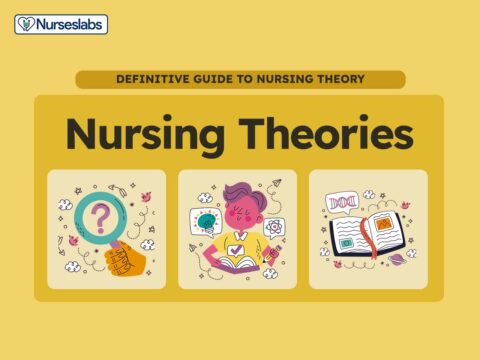
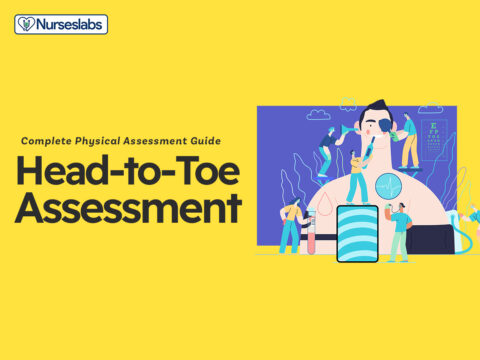
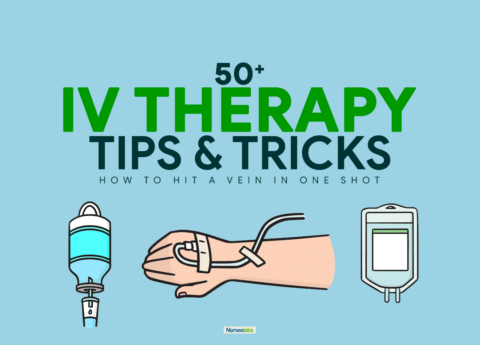

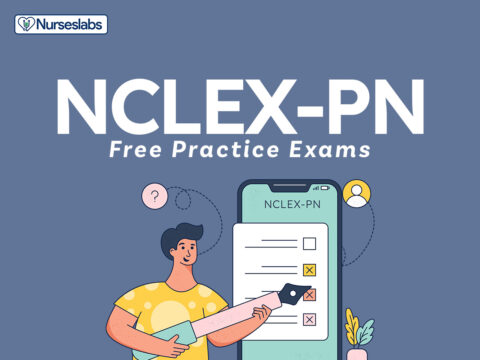












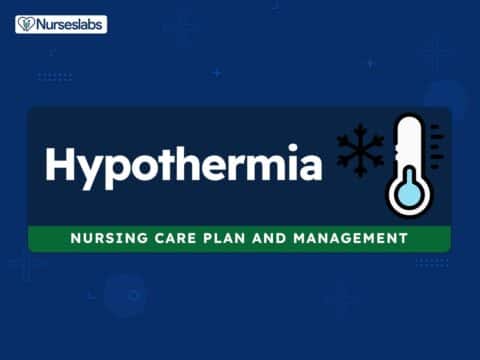
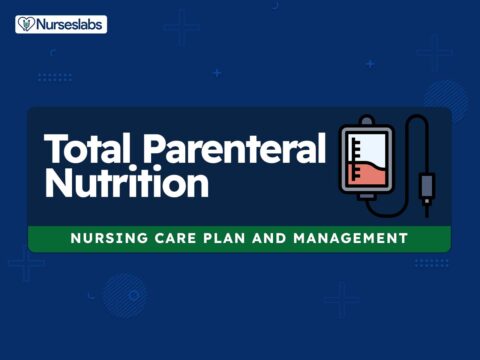
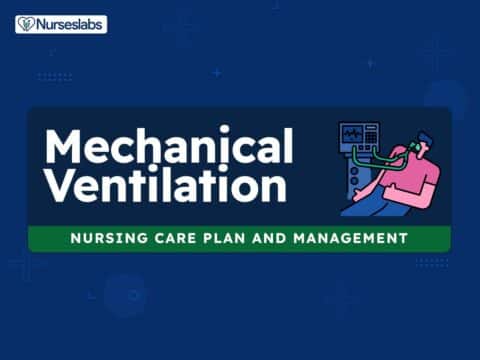
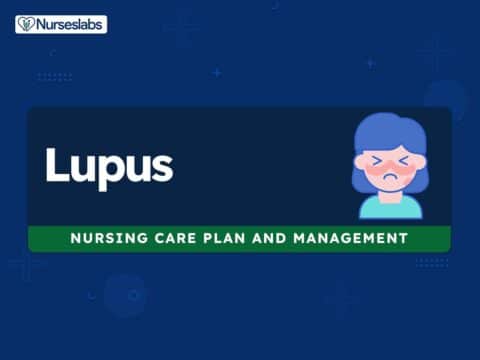

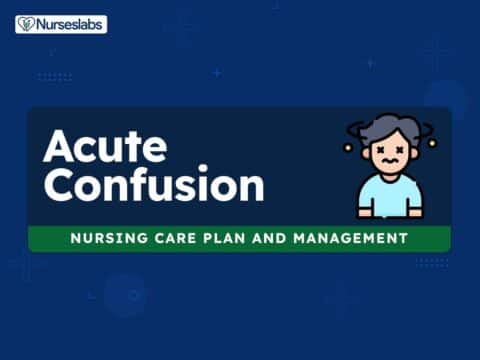

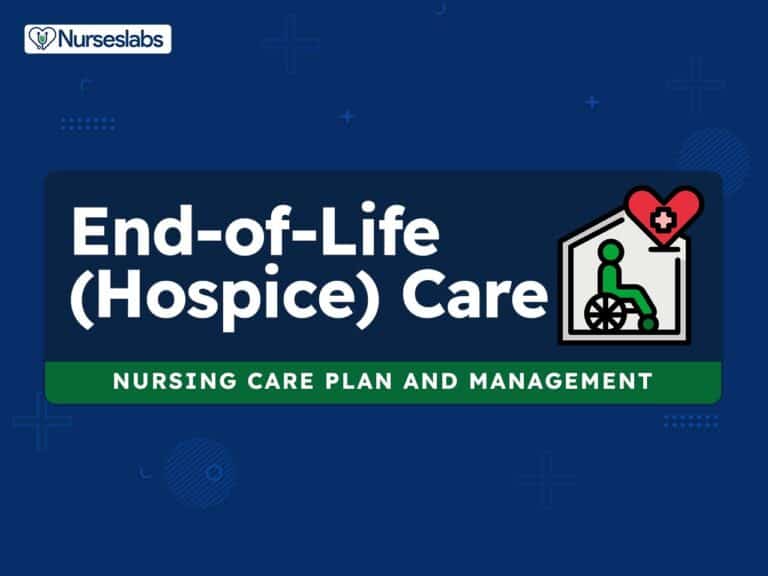
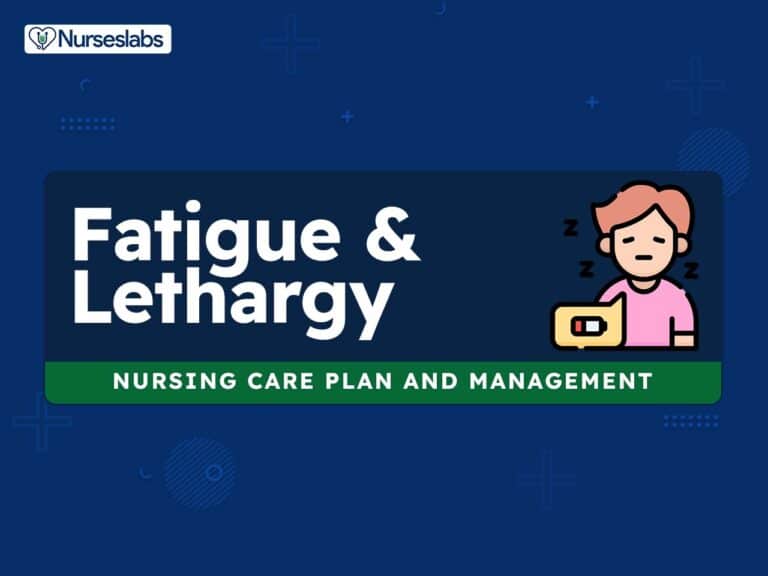
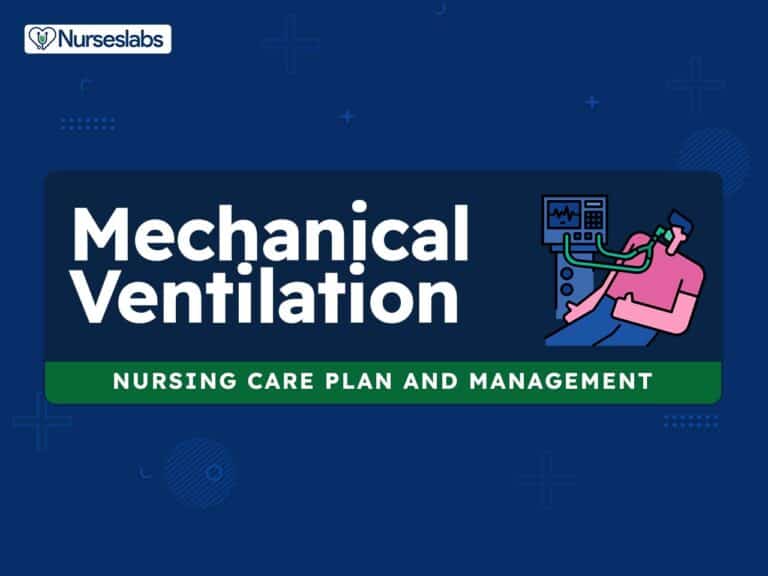



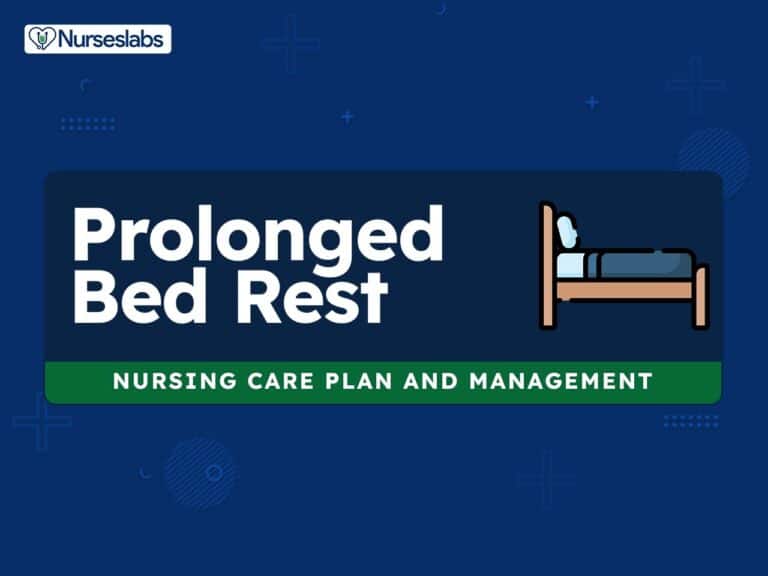
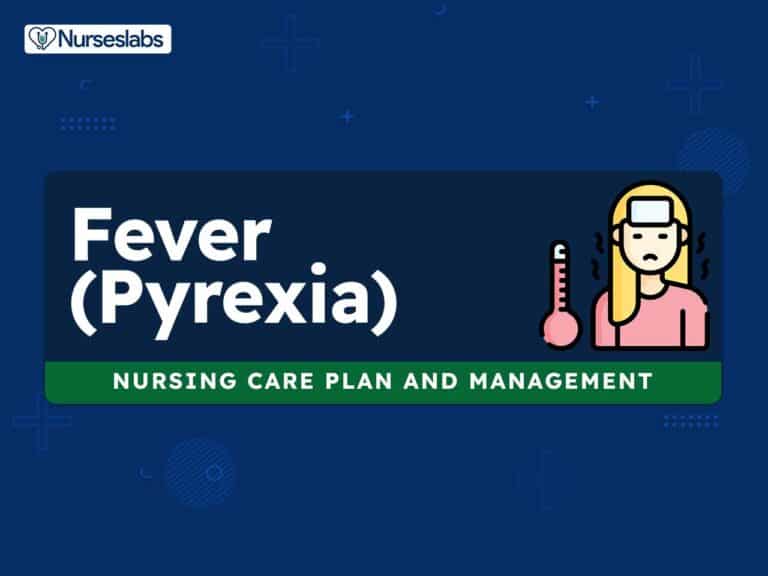


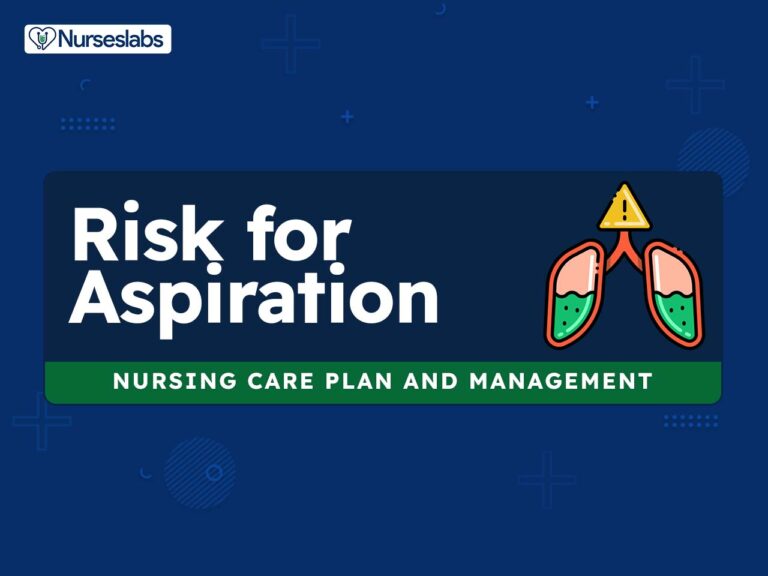

Leave a Comment